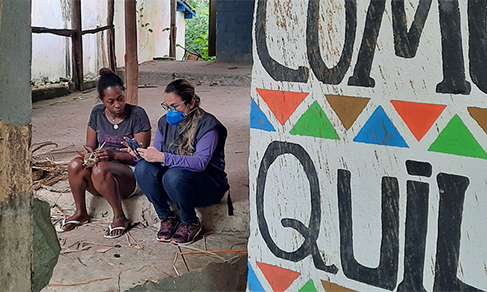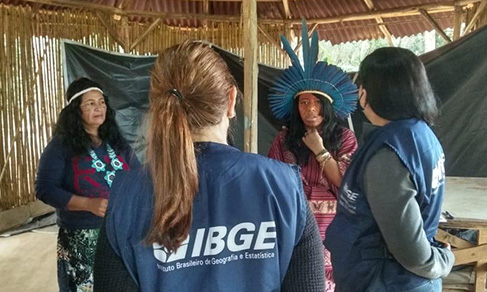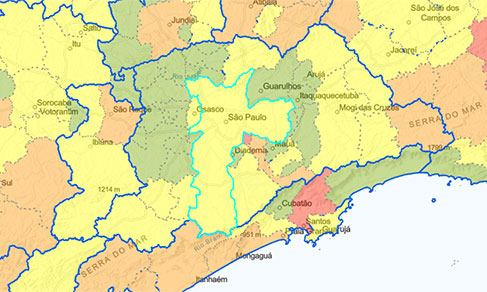Nossos serviços estão apresentando instabilidade no momento. Algumas informações podem não estar disponíveis.
Database on Indigenous Peoples and Quilombolas | 2019 Indigenous Peoples and Quilombolas
Description
The Database on Indigenous and Quilombolas consists of a set of record-based information, organized by municipalities, on the Indigenous and Quilombola areas estimated by the IBGE to carry out censuses and surveys.
The base represents all places in the national territory where there is a permanent agglomeration of inhabitants self-declared as Indigenous or Quilombolas (Decree No. 5.051/2004, Convention C 169 of the International Labor Organization).
Indigenous lands and Quilombola territories (officially delimited by the responsible bodies) and groups of households occupied by Indigenous and Quilombolas are registered. Data are also inserted from other locations that do not meet the previous criteria, but which are occupied by indigenous or quilombolas.
The anticipated data in this special edition, launched due to the fight against Covid-19, are in the process of consolidation for the 2021 Population Census, and are yet to be submitted to field and office validation steps.
This edition also includes data on the Indigenous population of the 2010 Population Census by Federation Units, Municipalities and Indigenous Lands.
Technical Information
Technical Notes
- Technical Notes - Geographic and Staisitcal Database on Indigenous Peoples and Quilombolas to face Covid-19
About the publication - 2019 Indigenous Peoples and Quilombolas
The files of Geographic and Statistical Database Base on Indigenous Peoples and Quilombolas to fight against COVID-19 are in accordance with the municipal political-administrative division of Brazil, in force on July 7, 2019, reference date of the 2019 Population Estimates.
The data comprises 5572 records, including:
- 5568 Municipalities;
- 1 Federal District (Brasília – DF);
- 1 State District (Fernando de Noronha – PE);
- 2 State Operational Areas (Lagoa dos Patos and Lagoa Mirim, both belonging to Rio Grande do Sul).
The files of Geographic and Statistical Database on Indigenous Peoples and Quilombolas to face COVID-19 are structured in tabular files in XLS and ODS format and vector files in shapefile format, suitable for Geographic Information Systems - GIS, organized in a unified file for Brazil and also in separated files by FU.
For further information, please access Read me and Technical Notes files.
More on the product - 2019 Indigenous Peoples and Quilombolas
Database
Documentation
- Read me
- Technical Notes - Geographic and Statistical Database on Indigenous Peoples and Quilombolas to face Covid-19 (updated on 05/20/2020)
Interactive panels
Learn more - 2019 Indigenous Peoples and Quilombolas
News and Releases
IBGE prepares national mobilization to enumerate quilombola communities for the first time
This Wednesday (17), the IBGE is working on the Mobilization Day for the Quilombola Census, official...
17/08/2022
IBGE holds national mobilization to enumerate Indigenous communities and peoples
Indigenous peoples have organization, habits and rituals of their own. As their lands have specific conditions...
10/08/2022
IBGE launches interactive dashboard to help municipalities fight the pandemic
The IBGE launches today (21) the Covid-19 Dashboard by Municipality, with interactive maps that enable...
21/09/2020
Against Covid-19, IBGE anticipates data on Indigenous Peoples and Quilombolas
The IBGE estimates that in Brazil there are 7,103 Indigenous localities and 5,972 Quilombolas localities...
24/04/2020







